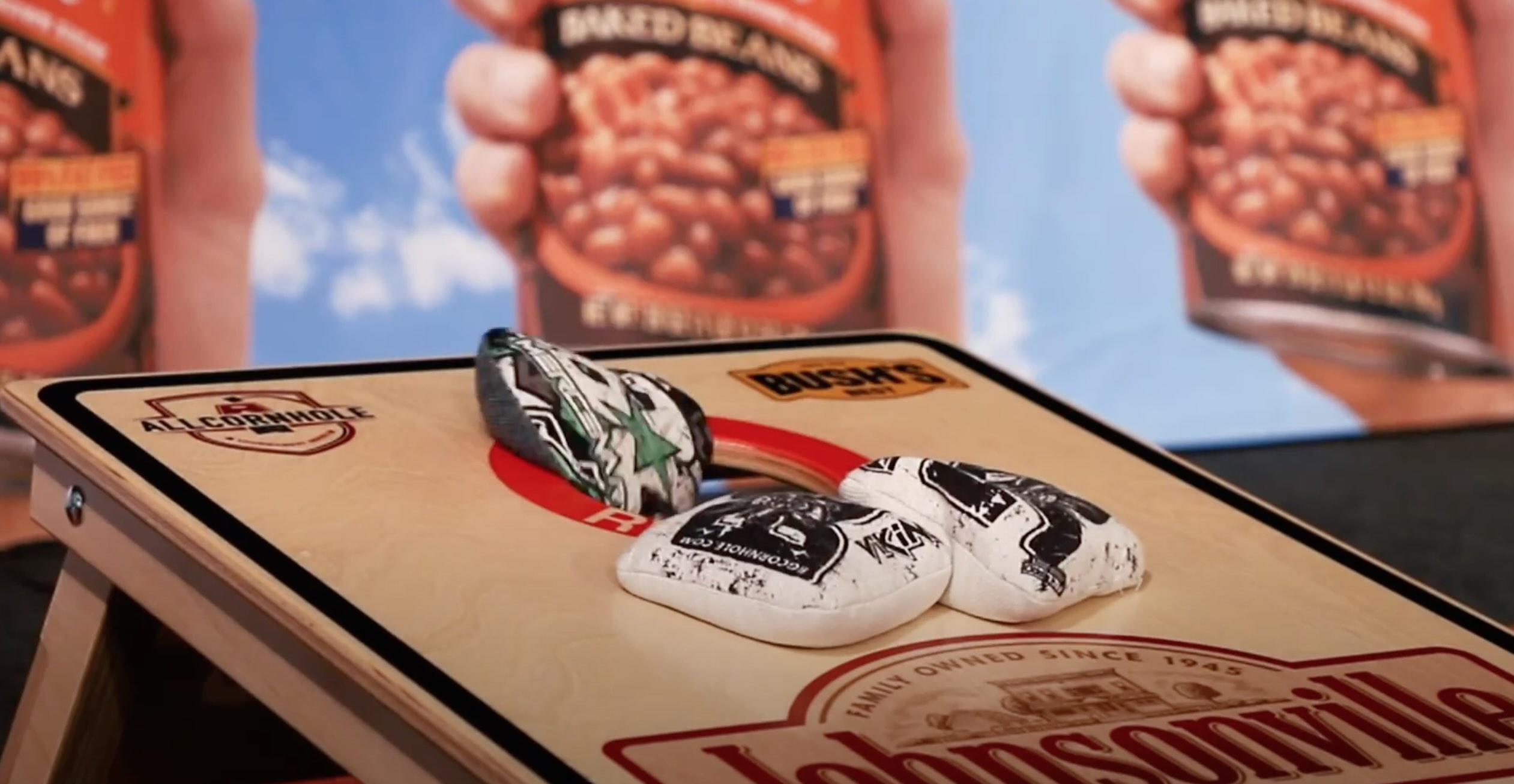Mastering Cornhole: Types of Throws, Strategy, and Technique

In competitive cornhole, bag placement is everything—and elite players don’t rely on just one style of throw. Whether sliding bags cleanly up the board or executing complex maneuvers like cut shots and roll bags, success depends on matching throw type to game situation, as well as mastering the technical differences in grip, release, and rotation.
Let’s break down the most common (and advanced) throws used at the pro level.
1. Slide Shot
Purpose: Basic scoring throw – slides smoothly into the hole or stops near it.
When to Use:
- Open board
- Early in the round
- Trying to score or push an existing bag in
Technique:
- Grip: Standard flat grip across the seam or corner.
- Spin: Flat and smooth horizontal spin (called “flat bag”).
- Release: Finger roll and wrist flick; avoid wobble.
- Bag Choice: Medium-speed bags that glide easily on the board.
Consistency is key. Top players like Trey Burchfield can throw this shot with robotic repeatability.
2. Blocker Bag
Purpose: Stops near the front of the hole to force opponents into tougher shots (rolls, airmails, cuts).
When to Use:
- When you want to protect a lead
- Force opponent errors or tricky angles
Technique:
- Grip: Slight forward tilt with fingertip control.
- Spin: Still flat, but lower power to kill momentum.
- Release: Throw it “soft,” so it checks up just past the front of the board.
The blocker bag is about real estate control—setting the tempo for the rest of the round.
3. Airmail
Purpose: Throws the bag directly into the hole, flying over any obstruction.
When to Use:
- Opponent has placed a blocker in front of the hole
- Your own bag is teetering on the edge
- Last-ditch effort to avoid giving up points
Technique:
- Grip: Same as slide shot; grip tight but relaxed.
- Spin: Flat bag with more arc and higher release.
- Release: Higher wrist flick and trajectory. Aim 3–4 feet above the board edge.
High risk, high reward. Airmails can score 3 or even push other bags in—if you hit it clean.
4. Roll Bag (or “Cut and Roll”)
Purpose: Hops or flips over blocker bags to land behind or slide in.
When to Use:
- When blockers prevent sliding
- You want to jump over or roll into a stack
Technique:
- Grip: Fingertip grip, often on a corner or with a thumb-over pinch.
- Spin: Impart top spin or diagonal roll by tilting the bag.
- Release: High-loft with nose-down angle. Some players even add a “pop” on release.
It’s like a basketball “floater” with backspin. Prodigies like Mark Richards and Tony Smith made the roll bag famous.
5. Cut Shot
Purpose: Carves around a blocker bag or hooks sideways into the hole.
When to Use:
- There’s a bag partially covering the hole
- You want to avoid full contact with a blocker
Technique:
- Grip: Slight off-center hold.
- Spin: Angled spin (not flat), like a Frisbee or curveball.
- Release: Throw across your body with a tilted wrist to generate lateral movement.
The cut shot requires feel and finesse—timing is everything.
6. Push Shot
Purpose: Push your own bag—or an opponent’s—into the hole.
When to Use:
- You’ve placed a blocker or bag near the hole
- To clean up a crowded board
Technique:
- Grip: Regular slide grip, but with firmer wrist.
- Spin: Flat spin but with more force.
- Release: Low, direct trajectory to drive through bags.
Think of this like a “power slide.” Accuracy and speed must be balanced—too fast and it might hop.
Bonus: Dirty Bag / Sneaker Shot
- Aimed at knocking in your bag while knocking away the opponent’s, often by hitting both.
- Useful in late-round shifts or when needing a point swing.
Strategy Meets Technique
Top-level cornhole isn’t about tossing bags—it’s about chess with fabric and resin. The best players read the board, anticipate opponents, and match the throw type to the moment. Mastering technical elements—grip, angle, rotation, and touch—is what separates pros from amateurs.
Next time you watch the ACL or play in a backyard tourney, look out for these throws—and start experimenting with them yourself.
